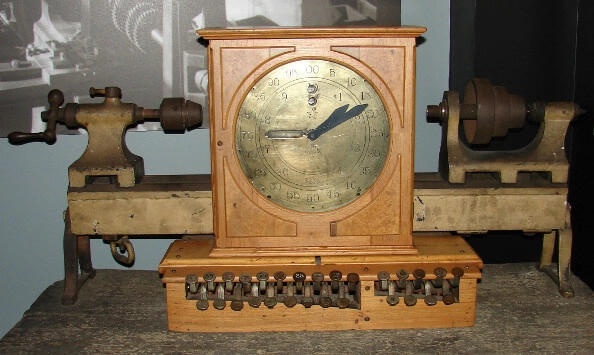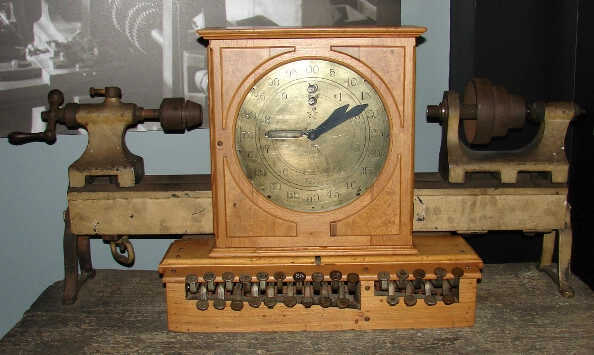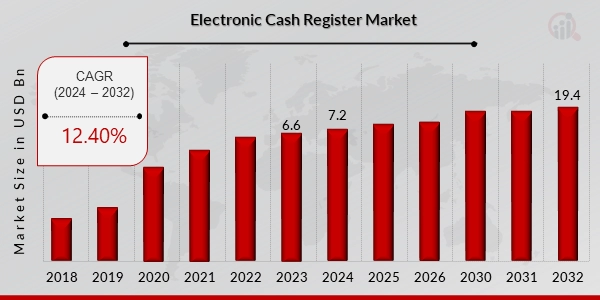How Much Did the First Cash Register Cost History and Price Evolution

How Much Did the First Cash Register Cost? Uncovering a Retail Revolution
Ever wondered about the history of cash registers and what the first cash register cost? This iconic invention transformed retail forever, and its price tells a fascinating story of innovation and business evolution. As a leading supplier of modern point of sale systems, SDLPOS is here to take you on a journey through the cost of the first cash register, its impact, and how today’s advanced solutions carry forward that legacy. Ready to dive into the past and discover why this matters for your business today? Let’s get started!
The Invention of the First Cash Register and Its Impact on Business
When we look back at the history of cash registers, the story begins with James Ritty, who invented the very first cash register in 1879. Ritty was a saloon owner in Dayton, Ohio, and his goal was to stop employee theft and keep better track of sales. This early innovation marked a major step forward in retail and business operations.
Who Invented the First Cash Register and When
James Ritty’s invention was originally called the “Incorruptible Cashier.” His machine mechanically recorded sales transactions, providing a clear and tamper-proof record of money received. This was revolutionary at a time when all sales were managed with paper records or memory alone.
Design and Functionality of the Original Machine
The first cash register was a fully mechanical device built to:
- Record sales by pressing buttons that printed the amount of the sale on a paper roll
- Create a timestamped record to prevent employee theft
- Make a ringing sound to alert owners when a transaction was registered
It was simple but effective, using clockwork gears and levers to perform all functions. This contrasted sharply with today’s advanced electronic and POS systems, yet laid the groundwork for modern transaction management.
Purpose and Impact on Business Operations at the Time
The primary purpose of the original cash register was to increase business accountability and accuracy in sales tracking. Before its invention, many retailers struggled with lost revenue due to employee dishonesty or human error. The cash register became a trusted tool that:
- Increased owner confidence in daily cash handling
- Reduced shrinkage and theft
- Helped standardize sales record-keeping
As a result, businesses could focus on growth knowing their finances were more secure and transactions properly documented. This innovation was a crucial milestone in retail technology, signaling the start of a new era for merchants and their operations.
Cost of the First Cash Register and Its Historical Price

The first cash register, invented by James Ritty in 1879, came with a price tag that reflected its groundbreaking nature and the economic context of the time. Back then, the original machine cost around $50 to $100. This might sound modest now, but in the late 19th century, that was a significant investment for most small business owners.
Factors Influencing the Cost of the First Cash Register
Several key factors shaped the price of these early cash registers:
- Materials and Craftsmanship: The first machines were mostly made from brass and wood, requiring precise craftsmanship. Quality materials drove the cost up compared to simpler mechanical tools of the era.
- Innovative Technology: Being an entirely new concept, the technology was limited and expensive to produce, especially with manual parts that needed careful assembly.
- Market Readiness: As a novel product, it lacked mass production efficiencies and was primarily targeted at businesses that could afford innovation—this also kept prices high.
Equivalent Cost in Today’s Money
Adjusting for inflation, the $50 to $100 price back then is roughly $1,400 to $2,800 in today’s dollars. This inflation-adjusted cost helps us understand why many businesses hesitated before adopting these machines, despite the clear benefits they provided.
By checking the history of cash registers and their cost, we see early investment was steep, but it set the stage for later innovations that made cash registers more affordable and accessible for a wide range of businesses.
Why the Price of the First Cash Register Mattered
Market Conditions and Business Environment
When the first cash register was introduced in the late 19th century, small businesses and retailers were cautious about investing in new technology. The business environment was heavily influenced by limited capital and a focus on minimizing costs, especially for local shops and service providers. Many stores operated on tight margins, so even a useful innovation like the cash register had to prove its worth from a financial standpoint.
Impact of Price on Adoption Among Business Owners
The initial cost of the cash register was relatively high, which made many business owners hesitate before making the purchase. This price point was significant enough that it wasn’t an automatic buy. Store owners had to weigh the upfront cost against the promise of reduced employee theft, improved transaction accuracy, and better record-keeping.
Because of this, adoption was slow but steady. Those who saw the cash register as a tool to protect revenue and streamline operations were more willing to invest. For many, it was a calculated risk to improve business efficiency in a competitive market.
Early Users and Industries That Invested Despite the Cost
Certain industries were quicker to adopt the cash register despite its price. Hotels, saloons, and busy retail stores found the machine especially valuable for tracking sales and preventing employee fraud. These sectors benefited the most because of their high customer volume and the complexity of cash handling.
- Hotels used the cash register to keep accurate tabs on guest charges
- Saloons and bars relied on it to manage multiple small transactions daily
- Retail stores with a variety of goods found it helped maintain better inventory and sales records
These early adopters recognized the long-term savings and security benefits, making the upfront cost a worthwhile investment.
For businesses today weighing the cost and benefits of upgrading their POS systems, understanding this history can give context to why choosing the right cash register solution, like those available through SDLPOS, is vital. Explore options and features at SDLPOS cash register systems to find the best fit for your retail needs.
Evolution of Cash Register Prices Over Time

The price of cash registers has changed significantly since the days of the original mechanical machines. Understanding these price trends helps us see how business needs and technology shaped the cost and features of cash registers over time.
Price Trends from Mechanical to Electronic Machines
- Early mechanical cash registers were relatively expensive for their time, reflecting the cost of durable materials and complex metalwork. Prices typically started in the few hundred dollars range, which was a big investment for small businesses back then.
- With the introduction of electronic cash registers in the mid-20th century, prices initially stayed high because of the new tech involved. However, mass production and advancing electronics began driving down costs.
- Today, modern cash registers and POS systems range widely in price, from budget-friendly basic models under $200 to advanced POS setups costing thousands, depending on the features and software included.
Technological Advancements Impacting Cost and Features
- The move from purely mechanical devices to electronic cash registers brought features like digital displays, programmable pricing, and receipts, adding value but also upfront cost.
- Advances in software integration and connectivity in POS systems allow real-time inventory tracking, sales analytics, and mobile payment processing, which justifies higher prices for tech-savvy users.
- Despite higher upfront costs for advanced systems, the long-term benefits—like efficiency and improved customer experience—often outweigh initial expenses.
Differences Between Mechanical Electronic and POS Systems
| Type | Price Range | Features | Typical Users |
|---|---|---|---|
| Mechanical | Higher initial cost (historic) | Basic transaction recording | Early retailers, small shops |
| Electronic | Mid-range ($200–$1000+) | Digital displays, programmed pricing | Small to medium businesses |
| POS Systems | Wide range ($200–$5000+) | Software integration, inventory, analytics | Larger retailers, chains, cafes |
- Mechanical registers were built to last with metal parts but lacked flexibility.
- Electronic models introduced convenience and speed but sometimes required technical know-how.
- Modern POS systems focus on adaptability, data management, and multi-channel sales, corresponding to their higher, though flexible, pricing.
By tracking these changes, it’s clear how cash register prices reflect technological progress and evolving business needs. For U.S. businesses, investing wisely in the right system can balance cost against valuable features that help keep operations smooth and customers satisfied.
Modern Cash Registers and Point of Sale Systems by SDLPOS
When it comes to upgrading your business with modern cash register technology, SDLPOS offers a wide range of point of sale systems designed to match different needs and budgets. Compared to the first cash registers, today’s POS hardware is much more affordable, versatile, and packed with features that improve business operations and customer experience.
How Modern POS Hardware Compares in Price and Features
Modern cash registers and POS systems from SDLPOS offer:
- Integrated payment processing, including contactless and mobile pay options
- Inventory management built into the software, reducing manual tracking errors
- Real-time sales reporting accessible on desktop or mobile devices
- Touchscreen interfaces for faster, intuitive operation
- Cloud-based data storage for security and easy access anywhere
Regarding cost, modern units are priced competitively, with options for small businesses starting from a few hundred dollars to more advanced systems for larger retailers. This is a huge shift from the hefty initial investment that the very first mechanical cash registers required.
Value of Investing in Up-to-Date Cash Register Technology
Upgrading to a contemporary POS system from SDLPOS brings clear benefits that justify the price:
- Speed and accuracy in sales processing, minimizing customer wait time
- Better business insights thanks to built-in analytics tools
- Reduced losses through improved cash handling and fraud prevention features
- Improved customer experience with faster checkout and multiple payment options
In today’s competitive market, these advantages often translate directly into higher sales and customer satisfaction.
Why SDLPOS Offers Competitive Pricing and Quality Solutions
SDLPOS is committed to making advanced cash register and POS technology accessible to U.S. businesses by offering:
- Affordable pricing without sacrificing quality — systems designed for longevity and reliability
- Flexible packages for all business sizes — from small shops to full-scale retailers
- Comprehensive customer support to help with setup and ongoing use
- Regular updates and feature improvements keeping pace with retail market changes
For businesses looking to invest in modern cash registers and POS systems, SDLPOS provides options that balance cost and capability, helping you move beyond the old mechanical models into a smarter future.
Explore SDLPOS’s offerings and see how modern cash registers can enhance your business operations at SDLPOS cash register for business and POS and cash register solutions.
